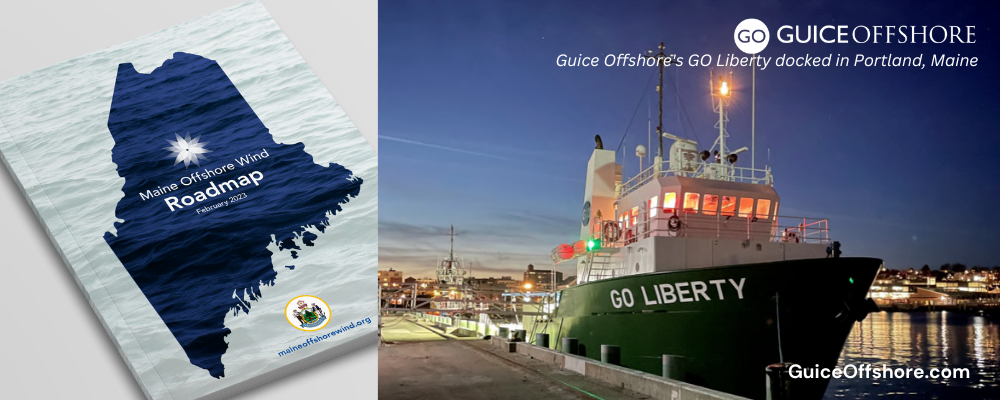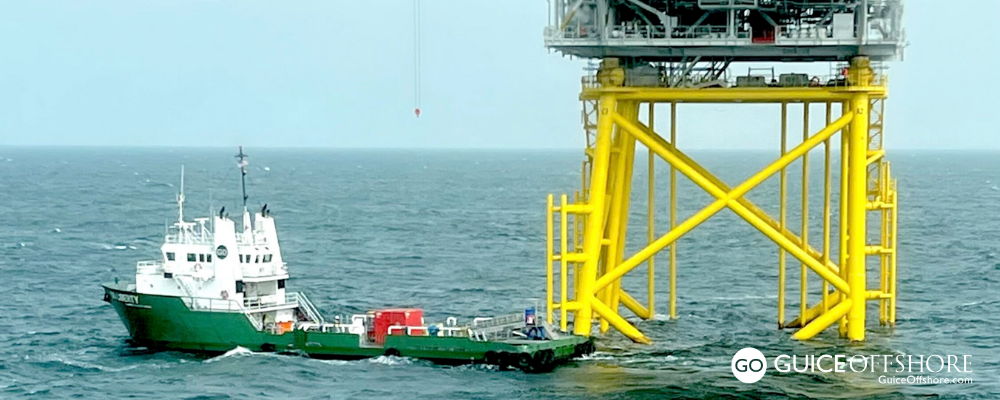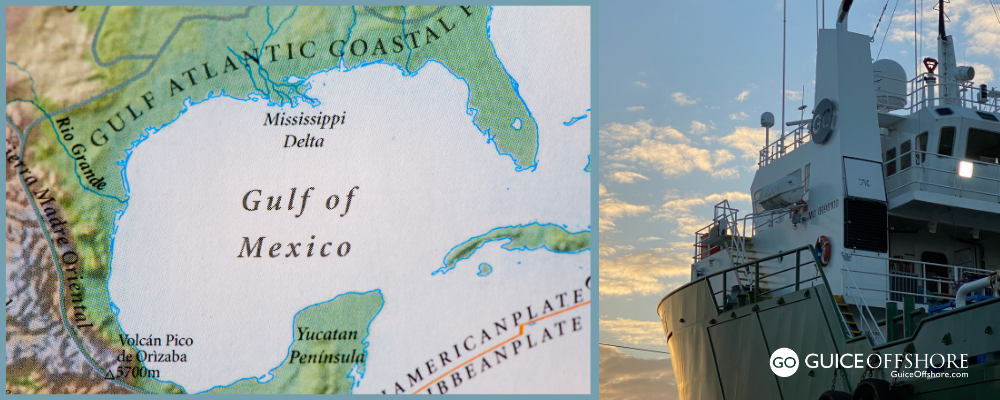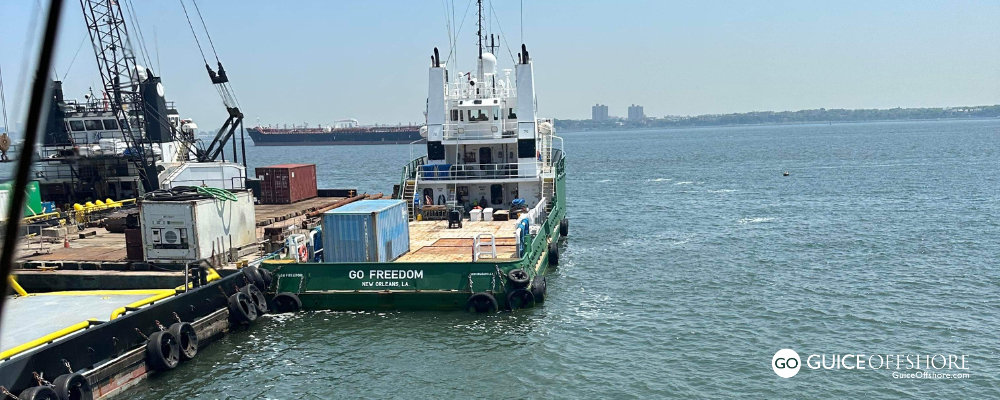During late February 2023, Maine Governor Janet Mills’ Energy Office published the long-awaited Maine Offshore Wind Roadmap, a stakeholder-driven comprehensive plan that offers detailed strategies for Maine to realize economic, energy, and climate benefits from offshore wind in conjunction with the communities, fisheries and wildlife sharing the Gulf of Maine.
The Roadmap was developed over 18 months in a robust public process led by a 24-person advisory committee with members from State of Maine agencies and energy, economic, fisheries, wildlife, science, and environmental leaders in Maine who analyzed the state’s infrastructure, workforce and offshore wind capabilities. The Roadmap provides tangible steps the State of Maine can take in support of its offshore wind industry development.
The Roadmap advisory committee was supported by four expert working groups on energy, economy, fisheries and wildlife. Together, nearly 80 public sessions were held to develop the report.
Objectives of the Roadmap are organized around five key topics – supporting economic growth and resiliency, harnessing renewable energy, advancing Maine-based innovation, supporting Maine’s seafood industry, and protecting the Gulf of Maine’s ecosystem.
Key findings of the Roadmap include:
- Today, Maine has 80 companies engaging in the U.S.’s offshore wind industry, which is expected to generate $109 billion in private investment by 2030;
- Workforce opportunities in offshore wind cover nearly 120 occupations in Maine, such as engineering, electricians, metalworkers, marine operations, surveying, boat building and maintenance, and research and development.
- Over the long-term, offshore wind will reduce Maine and New England’s reliance on expensive, imported natural gas to generate electricity and meet an increasing demand for clean energy to curb carbon emissions and fight climate change;
- UMaine’s pioneering floating offshore wind research offers Maine an opportunity for leadership in this growing industry, as the works to achieve a national target of 15 gigawatts of floating offshore wind energy by 2045;
- Offshore wind must advance responsibly in Maine to preserve the state’s thriving marine economy, especially fishing, and protect the vital ecosystem of the Gulf of Maine and the individuals, communities and wildlife that depend on it.
To inform these objectives, the Roadmap commissioned several detailed technical studies of the economic, socioeconomic, and energy needs and impacts of offshore wind. To read the full Roadmap and all supporting studies, please visit maineoffshorewind.org/roadmap.
“Our state has the opportunity to unlock the power of offshore wind to generate clean, homegrown energy, lower energy costs, create good-paying jobs in a growing industry, and protect our environment for future generations,” Governor Janet Mills said. “The Maine Offshore Wind Roadmap, developed collaboratively by a wide range of stakeholders, offers a responsible, forward-looking plan for how we can harness the power of wind far off the coast in the Gulf of Maine to seize the economic and environmental benefits for our state in collaboration with industries, families, and coastal communities that we care so deeply about.”
The Maine Offshore Wind Roadmap, which was supported by a $2.1 million grant from the U.S. Economic Development Agency, is part of the Maine Offshore Wind Initiative, a multi-faceted approach to responsible offshore wind in Maine launched by Governor Janet Mills in 2019 and overseen by the Governor’s Energy Office.
The release of the Roadmap comes after the Bureau of Ocean Energy Management (BOEM) in January 2023 advanced an application by the State of Maine to lease a proposed site in Federal waters in the Gulf of Maine for a Floating Offshore Wind Research Array.
As the first project of its kind in the United States, the research array will foster cutting-edge research into the cost-effective operation of floating offshore wind and how it interacts with the marine environment, wildlife, the fishing industry, shipping and navigation routes and more.
The array is proposed to include 10-12 turbines on semi-submersible floating concrete platforms known as VolturnUS, designed by the University of Maine’s Advanced Structures and Composite Center. The final size and location of the research site will be determined by BOEM during its leasing review process, which will continue this year.
“With the Maine Offshore Wind Roadmap, Maine has an outline on how to lead on responsible development of offshore wind that delivers on its vast potential to secure our energy independence, fight climate change, and strengthen Maine’s economy,” said Dan Burgess, Director of the Governor’s Energy Office, and Ret. Admiral Gregory Johnson, co-chairs of the Maine Offshore Wind Roadmap Advisory Committee. “In developing the Roadmap, the advisory committee and working groups engaged with fishermen, scientists, and others to address head-on important questions about how offshore wind can be compatible with the Gulf of Maine’s remarkable ecosystem and existing users. Through this process, and by leveraging groundbreaking new studies and data-driven insights, this Roadmap offers an informed path for maximizing offshore wind’s benefits to Maine in manners that also protect our people, communities, and the environment.”
Since the Maine Offshore Wind Initiative was launched in 2019, the pace of the offshore wind in the U.S. has accelerated as clean energy generation targets set by the Federal government and many states increase demand for commercial-scale projects in deep Federal waters, where floating platform technology will likely be required.
“The Maine Offshore Wind Roadmap reflects consideration of the issues, needs and innovation to responsibly advance — and realize — a cleaner, affordable energy future for the state and its people,” said University of Maine President Joan Ferrini-Mundy. “As the state’s R1 university with research and development capacity, UMaine is proud to have set Maine on the path to benefit from the responsible advancement of offshore wind and now, as part of the Roadmap, to continue to lead Maine-based innovation to compete in the emerging national and global offshore wind industry. We appreciate the state’s leadership in this initiative — from recognizing the value of innovation to shape economic development to ensuring the future of the Gulf of Maine and the communities and industries that depend on it.”
Maine’s Comprehensive Plan to Responsibly Advance Offshore Wind
In September 2022, the U.S. Departments of Energy, Interior, Commerce and Transportation collectively announced a new initiative – the Floating WindShot — to accelerate floating wind by setting a national target of generating 15 gigawatts of energy from floating wind by 2045, and reduce the cost of this energy by 70 percent.
In January 2022, BOEM released its draft area for potential commercial offshore wind leasing in the Gulf of Maine and held a series of public meetings across New England on its planning process leading up to its proposed sale of commercial offshore wind leases in the Gulf of Maine in 2024.
Other offshore wind initiatives include the Maine Offshore Wind Research Consortium, an assembly of fisheries, wildlife, and marine science and industry experts advising the State’s offshore wind research; evaluation of offshore wind port locations, led by the Maine Department of Transportation; and advocating for Maine’s interests in Federal plans for commercial offshore wind leasing through the Gulf of Maine Task Force.
In advance of commercial leasing, Governor Janet Mills has pressed the U.S. Department of the Interior, which oversees BOEM, to involve Maine fishermen in Federal plans for leasing in the Gulf of Maine for commercial offshore wind.
To preserve State waters for recreation and fishing and cement into law Maine’s priority of locating offshore wind projects in Federal waters in the Gulf of Maine, Governor Mills in 2021 signed LD 1619, which prohibits new offshore wind projects in State waters.
In addition to the Maine Governor’s Energy Office, the Roadmap received support from other state agencies, including the Maine Department of Marine Resources, the Department of Economic and Community Development, the Department of Inland Fisheries and Wildlife, the Maine Port Authority, and the Department of Transportation.
The Business Network for Offshore Wind, the nation’s largest organization solely dedicated to the advancement of the industry and its supply chain, congratulated the state of Maine on the completion of an its state roadmap to develop offshore wind in the Gulf of Maine. The organization’s staff served as industry advisors on the project and will work with Maine further on building out its offshore wind supply chain.
More on the New Maine Offshore Wind Research Advisory Board
The Maine Offshore Wind Research Consortium advisory board, which will advise the State on research priorities in support of responsible offshore wind in the Gulf of Maine, held its first meeting on February 14, 2023. The advisory board includes expert members representing Maine’s fishing industry, wildlife experts, scientists, the offshore wind industry and State agencies.
Pursuant to a new bipartisan state law, the Consortium, will support Maine’s research into the cost-effective operation of floating offshore wind, and how it interacts with the marine environment, wildlife, the fishing industry, shipping and navigation routes and more.
Further, the Consortium will help outline research strategies for the Gulf of Maine Floating Offshore Wind Research Array, an energy research project proposed to deploy 10-12 turbines on semi-submersible floating concrete platforms pioneered by the University of Maine.
The Consortium will also collaborate closely with other states and regional and national science and research partners, including the National Offshore Wind Research and Development Consortium, and the Regional Wildlife Science Consortium, of which the Governor’s Energy Office is a member.
Members of the Consortium include:
Commercial and recreational harvesting interests
- Patrice McCarron, Maine Lobstermen’s Association
- Jack Cunningham, Maine Lobster Union
- Ben Martens, Maine Coast Fishermen’s Association
- Terry Alexander, F/V Jocka
- Mary Beth Tooley, O’Hara Corp
- Chris Weiner, F/V Elizabeth Ames, American Bluefin Tuna Association
- Bob Humphrey, Sport-Ventures
Scientists from private and public research institutions
- Alison Bates, Colby College
- Damian Brady, University of Maine
- Wing Goodale, Biodiversity Research Institute
- Nick Record, Bigelow Laboratory for Ocean Sciences
- Graham Sherwood, Gulf of Maine Research Institute
- Sean Todd, College of the Atlantic
- Anthony Viselli, University of Maine
- Gayle Zydlewski, Maine Sea Grant
Offshore wind industry experience
- Dave Cowan, Diamond Offshore Wind
- Wojciech Wiechowski, RWE
- Laura Morse, Mainstream
Coastal community representatives
- Bill Needelman, Portland Waterfront Coordinator
- TBD
Maine-based environmental groups
- Jocelyn Runnebaum, The Nature Conservancy Maine
- Sarah Haggerty, Maine Audubon
State agencies
- Carl Wilson, Department of Marine Resources
- John Perry, Inland Fish and Wildlife
- Stephanie Watson, Governor’s Energy Office
At-large
- Daniel Salerno, Fisheries Scientist, Limington, Maine
Maine’s Floating Offshore Wind Research Site Approved
In January 2023, BOEM determined that no competitive leasing interest exists for a site in the Gulf of Maine that is proposed for a small-scale floating offshore wind research array. The array will feature patented technology developed by the University of Maine.
BOEM’s decision enables Maine’s application for a federal research lease for the proposed site – which the State has identified as a 15.2-square-mile area of Federal waters of the Gulf of Maine some 45 miles offshore from Portland – to move forward. The final size and location of the research site will be determined by BOEM during its leasing review process.
“This decision by BOEM is a positive step forward in Maine’s responsible pursuit of floating offshore wind research,” said Dan Burgess, Director of the Governor’s Energy Office. “The research array is the cornerstone of Maine’s judicious approach to floating offshore wind, which emphasizes cooperation and collaboration with Maine’s fishing industry and environmental community to conduct important research and testing of this new technology and evaluate its potential impacts on existing uses.”
The floating offshore wind research array is proposed to include 10-12 turbines on semi-submersible floating concrete platforms pioneered by the University of Maine. As the first project of its kind in the United States, the research array will foster cutting-edge research into how floating offshore wind interacts with the marine environment, fishing industry, shipping and navigation routes, and more.
For more than a decade, the University of Maine’s Advanced Structures and Composite Center has designed and developed floating concrete hull technology for offshore wind turbines called VolturnUS, with the goal of creating a vibrant Maine-based floating offshore wind industry. Floating platforms are considered essential technology for deep-water offshore wind energy.
“We are excited to see this technology and innovation — a decade in the making with the leadership of the state’s R1 research university — be able to move forward to the next level,” said Joan Ferrini-Mundy, President of the University of Maine and the University of Maine at Machias, and Vice Chancellor for Research and Innovation for the University of Maine System. “We appreciate the cutting-edge innovation of UMaine’s Advanced Structures and Composites Center, led by Habib Dagher, and all leadership and vision in Maine working to make offshore wind and economic development possible to improve the lives of Maine people.”
The State applied for the research lease in October 2021, following months of public and stakeholder outreach, research, and data analysis to identify a responsible site in the Gulf of Maine with minimal effects on fishing, wildlife, and navigation. As part of this application, BOEM first solicited competitive interest in the proposed lease location prior to conducting further environmental reviews, site assessment and lease negotiations.
Proposed at 15.2 square miles, the research site identified by the State represents approximately .04 percent of the 36,000-square-mile Gulf of Maine. It was selected following an extensive public outreach process led by the Governor’s Energy Office, which included an analysis by the Maine Department of Marine Resources (PDF) that helped identify areas that minimized known potential impacts on the fishing industry.
As an unprecedented research opportunity to improve understanding of the potential benefits and impacts of floating offshore wind, the research site reflects the Mills Administration’s commitment to advancing offshore wind responsibly in Federal waters of the Gulf of Maine, which has some of the highest sustained wind speeds in the world and abundant potential to generate clean, renewable energy for Maine people.
The research site also aligns with the trajectory of the emerging offshore wind industry in the U.S., as clean energy generation targets by the Federal government and many states increase demand for commercial-scale projects in deep Federal waters, where floating platform technology will likely be required.
By addressing fundamental questions about how offshore wind can co-exist with other users of the Gulf of Maine, the intent of the research array is to advance the development of Maine’s offshore wind economy while informing the responsible growth of commercial scale floating offshore wind in the Gulf of Maine and beyond.
Also in January, BOEM released its draft area for potential commercial offshore wind leasing in the Gulf of Maine and announced a series of public meetings on its planning process leading up to its proposed sale of commercial offshore wind leases in the Gulf of Maine in 2024.
Maine is a member of BOEM’s Gulf of Maine Task Force, along with New Hampshire and Massachusetts, through which the State will continue to participate and advocate for the State’s interests in BOEM’s plans for commercial leasing.
For more information on the Roadmap, please visit maineoffshorewind.org/roadmap.
Guice Offshore Has the Jones Act-Compliant Supply, Support and Platform Vessels To Help Meet America’s Offshore Wind Goals
In response to the March 2022 National Renewable Energy Laboratory report outlining in part the need for six types of offshore vessels in order to fulfill offshore wind power supply chain needs to reach the United States’ national offshore wind goal of 30 gigawatts (GW) by 2030, Guice Offshore (“GO”) Vice President David Scheyd said:
“Our growing fleet of Jones Act-compliant, dynamically positioned offshore supply vessels, mini supply vessels and platform vessels is well positioned to help meet our nation’s wind energy infrastructure installation and service goal deadlines, whether it’s crew transfer, service, cable laying, subsea work like scour protection or equipment transportation.”
To get a link to the report, entitled “The Demand for a Domestic Offshore Wind Energy Supply Chain,” and its concurrent U.S. Department of Energy (DOE) Office of Energy Efficiency and Renewable Energy (EERE), U.S. Department of Energy report, “America’s Strategy to Secure the Supply Chain for a Robust Clean Energy Transition,” click here: https://lnkd.in/gXMGRmqj



